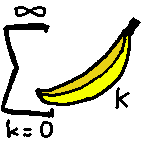1
2
3
4
5
6
7
8
9
10
11
12
13
14
15
16
17
18
19
20
21
22
23
24
25
26
27
28
29
30
31
32
33
34
35
36
37
38
39
40
41
42
43
44
45
46
47
48
49
50
51
52
53
54
55
56
57
58
59
60
61
62
63
64
65
66
67
68
69
70
71
72
73
74
75
76
77
78
79
80
81
82
83
84
85
86
87
88
89
90
91
92
93
94
95
96
97
98
99
100
101
102
103
104
|
/*
Minetest
Copyright (C) 2013 celeron55, Perttu Ahola <celeron55@gmail.com>
This program is free software; you can redistribute it and/or modify
it under the terms of the GNU Lesser General Public License as published by
the Free Software Foundation; either version 2.1 of the License, or
(at your option) any later version.
This program is distributed in the hope that it will be useful,
but WITHOUT ANY WARRANTY; without even the implied warranty of
MERCHANTABILITY or FITNESS FOR A PARTICULAR PURPOSE. See the
GNU Lesser General Public License for more details.
You should have received a copy of the GNU Lesser General Public License along
with this program; if not, write to the Free Software Foundation, Inc.,
51 Franklin Street, Fifth Floor, Boston, MA 02110-1301 USA.
*/
#include "quicktune.h"
#include "threading/mutex_auto_lock.h"
#include "util/string.h"
std::string QuicktuneValue::getString()
{
switch(type){
case QVT_NONE:
return "(none)";
case QVT_FLOAT:
return ftos(value_QVT_FLOAT.current);
}
return "<invalid type>";
}
void QuicktuneValue::relativeAdd(float amount)
{
switch(type){
case QVT_NONE:
break;
case QVT_FLOAT:
value_QVT_FLOAT.current += amount * (value_QVT_FLOAT.max - value_QVT_FLOAT.min);
if(value_QVT_FLOAT.current > value_QVT_FLOAT.max)
value_QVT_FLOAT.current = value_QVT_FLOAT.max;
if(value_QVT_FLOAT.current < value_QVT_FLOAT.min)
value_QVT_FLOAT.current = value_QVT_FLOAT.min;
break;
}
}
static std::map<std::string, QuicktuneValue> g_values;
static std::vector<std::string> g_names;
std::mutex *g_mutex = NULL;
static void makeMutex()
{
if(!g_mutex){
g_mutex = new std::mutex();
}
}
std::vector<std::string> getQuicktuneNames()
{
return g_names;
}
QuicktuneValue getQuicktuneValue(const std::string &name)
{
makeMutex();
MutexAutoLock lock(*g_mutex);
std::map<std::string, QuicktuneValue>::iterator i = g_values.find(name);
if(i == g_values.end()){
QuicktuneValue val;
val.type = QVT_NONE;
return val;
}
return i->second;
}
void setQuicktuneValue(const std::string &name, const QuicktuneValue &val)
{
makeMutex();
MutexAutoLock lock(*g_mutex);
g_values[name] = val;
g_values[name].modified = true;
}
void updateQuicktuneValue(const std::string &name, QuicktuneValue &val)
{
makeMutex();
MutexAutoLock lock(*g_mutex);
std::map<std::string, QuicktuneValue>::iterator i = g_values.find(name);
if(i == g_values.end()){
g_values[name] = val;
g_names.push_back(name);
return;
}
QuicktuneValue &ref = i->second;
if(ref.modified)
val = ref;
else{
ref = val;
ref.modified = false;
}
}
|
